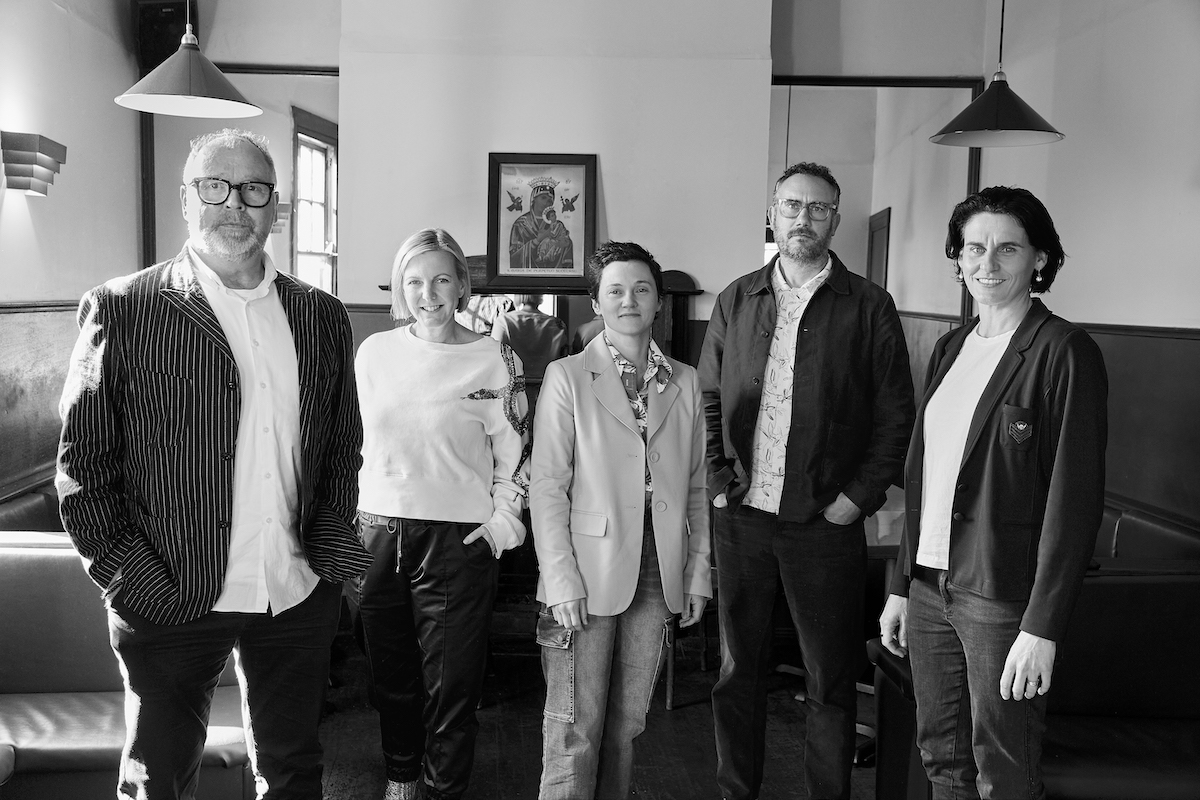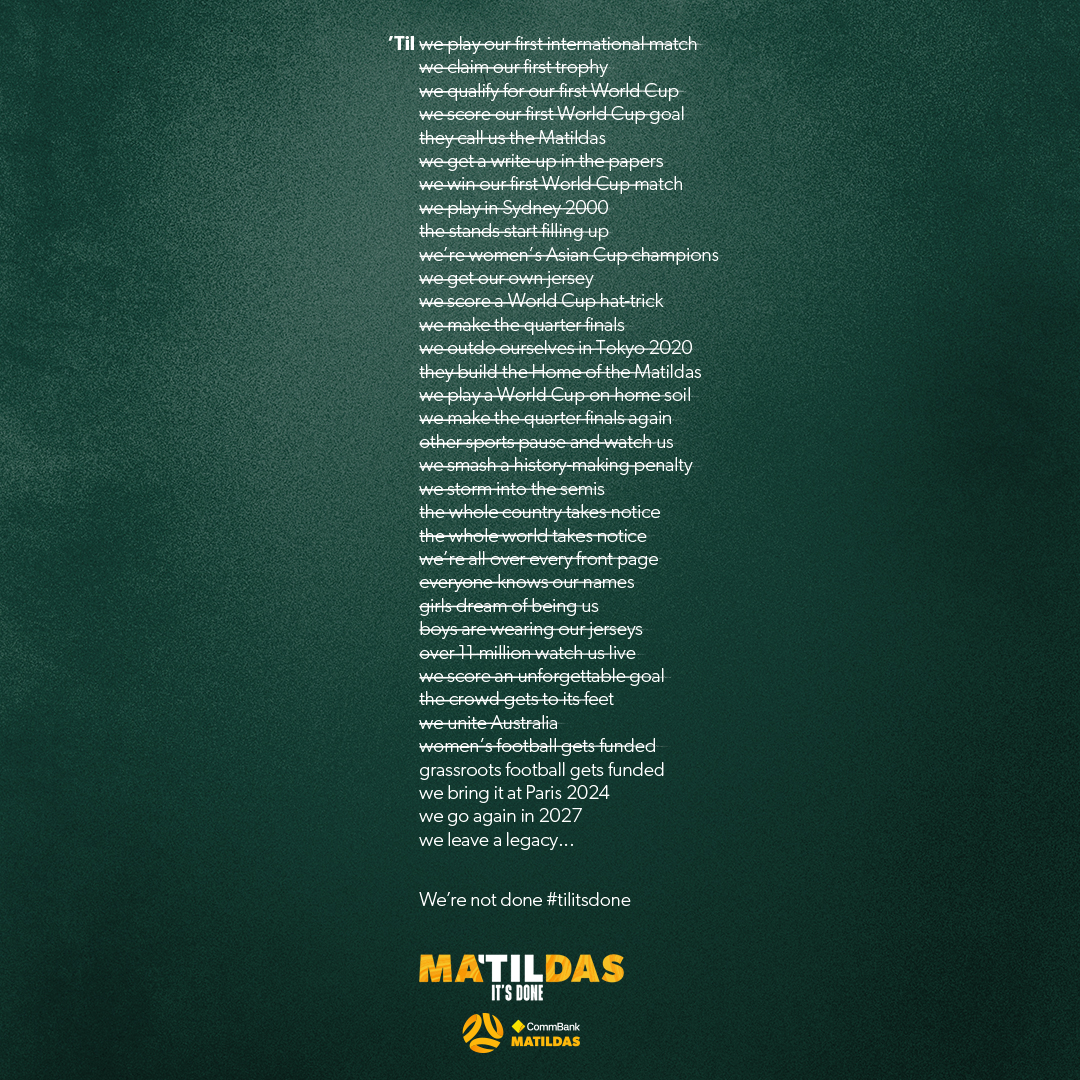CB Q&A with Ogilvy Network ANZ: “Our clients have never been more ambitious + with our new structure we’re ready to meet that ambition”

(Pictured L-R: Ogilvy Network ANZ CCO Toby Talbot, Ogilvy NZ ECD Kristal Knight, Ogilvy Melbourne ECD Hilary Badger, Ogilvy Sydney ECD Clark Edwards and Ogilvy Sydney ECD Bridget Jung)
A group of like-minded creatively focused people, all intent on doing the most interesting work out there. There’s a new creative energy at Ogilvy Network ANZ and an exciting creative vision. Campaign Brief dives deeper…
How would you describe Ogilvy ANZ’s creative approach and focus?
Toby Talbot: We’re a group of offices united for the first time with a Regional CCO and new leaders at ECD level. That’s an exciting shift for Ogilvy, and it’s testament to the ambition Sally Kissane, our Group CEO, has for us all. It’s a huge inflection point for Ogilvy ANZ, where we get to shape what our creative approach will be. We have long-standing relationships with sizeable clients, and that tends to preclude a scrappy start-up vibe. But we don’t think creativity should only be for indies. Our clients have never been more ambitious, and with our new structure we’re ready to meet that ambition.
Kristal Knight: There will always be BAU work that should be delivered effortlessly and artfully, and our scale helps us do that. But we can take clients of any type and offer them a huge mix of skills. It’s unusual to find an agency where creative technology, PR, social & influencer, experience and what you’d traditionally call “advertising” all work together. And accessing all those specialists from New Zealand has proved invaluable to me.
Hilary Badger: We’ll never be scamtastical with our creativity. We are about powerful, impactful ideas that build brands for our clients. And with incredible creativity technologists and with WPP’s focus on AI, we are heavily leaning into tech-led ideas too.
Clark Edwards: We’re in a kind of goldilocks zone – small enough to move quickly yet resourced well enough to hit a client need from a whole bunch of different angles
How does that manifest itself into the work? Any recent examples you are particularly proud of?
HB: Football Australia was an example where our scale and ambition helped us pull together a pitch for the Matildas ahead of the World Cup. From tender to the UK shoot, it was only a few weeks. It took all the departments working together across the offices to make it happen. And then, when we came up with a proactive outdoor idea, we were able to leverage WPP’s GroupM to find us media at the last minute. That’s how a connected agency like Ogilvy can foster creativity and get it out into the world.
TT: To see how quickly we could mobilise and execute on topical moments such as the day after the Matildas semi-final exit, makes you truly appreciate the heft of WPP. And more proof of its genuine desire to be the most creative company in the world.

Ogilvy was a pioneer in the concept of ‘borderless creativity’ and making it about much more than geography. What does borderless creativity really mean?
KK: The convention is to assume that creativity lives solely in the creative department. If we want to make different-shaped ideas, we need to look for creative thinking outside of that convention. Borderless Creativity unlocks the power of the creative talent we have throughout the ANZ business. When we’re casting the creative team, it’s not about just assigning an art director and a copywriter anymore, a creative team often involves a UX designer, PR specialist, cultural consultant, creative technologist or behavioural scientist. Whether it’s for a client like the Human Rights Commission or wildbean cafe, we’re constantly pushing trans-Tasman, cross discipline collaboration. It also means we can be nimble and tap into the incredible talent we have across the network on demand. So, we can be a big, powerful agency without actually being a big, expensive agency.
Bridget Jung: The critical ingredient underpinning borderless creativity at Ogilvy is casting for capability (not casting for availability). This means we can build a team based on the specific needs of each brief rather than generic team structures. Whitelion is a great example of how the right creative combination from across our network is a catalyst for creativity.
CE: In today’s world borderless thinking is a given. Borderless within the agency is what it means now, in that there’s a through line of creative ambition that seamlessly links digital and CX, PR and brand building.
You’ve now got a full creative bench in place, with a variety of skills and backgrounds. How do you see that kind of diversity in thinking benefitting clients?
HB: A leadership team should be as diverse as the audience of its output. That seems self-evident, yet it’s so rarely true. But Ogilvy now has women occupying more than 50% of its creative leadership roles. Of course, every agency, and the entire world, has a lot more work to do until leadership is diverse in all the ways in should be. But this feels like a strong start. Why does this diversity matter and how will it benefit our clients? Because creativity can only thrive where there’s diversity. There’s nothing less creative or inspiring than a monoculture. Diversity brings a mindset that questions the status quo, naturally bred from a lifetime of sitting outside it. To get results for our clients, we need to imagine how things could be different and better. That’s just more intuitive when your leadership mix isn’t like everyone else’s.
CE: Clients’ business problems are increasingly diverse. It makes sense that our creative bench mirrors that same diversity with new approaches and solutions. We’re actively looking into less conventional areas for recruitment. Tapping into candidates with different backgrounds. For example, hiring a community manager out of the recent D&AD Shift program. Removing bias from recruitment is something Sally is invested in too, so it’s a natural part of who we are at Ogilvy.
Ogilvy’s senior team also includes some of the country’s leading female creative talent. What benefit does this bring to your creative approach and how are you encouraging younger creative talent to stay in the industry?
HB: You just can’t underestimate the power of visibility. Attracting and retaining talent depends on that talent being able to see a career path for themselves, both in the agency and the industry. Until you see someone else doing it, it’s only theoretically possible. So, I think we’re doing a lot by just making what we do seem like the norm that it should be. But aside from that, we place a high value on mentoring women within our own agency via an internal program called SHECD. In various ways we’ve contributed to raising up women within the industry over the years, from Aunties mentoring to being interviewed, judging, chairing committees and getting involved in programs to promote diversity like D&AD Shift.
BJ: What I love most about SHECD is that it’s a grassroots initiative fuelled by input from the women creatives within Ogilvy. It all began with three outstanding women from our Sydney creative department, and they’ve been organising formal events and workshops based on feedback from their peers. They’ve really honed-in on identifying the gaps and meeting our most pressing needs with tangible actions.
Economic conditions are tight across ANZ, with consumer spending patterns changing as a result. What do you see as the biggest challenges coming up, and what role can creativity play in solving them?
TT: These are challenging times for sure, but there’s nothing that meets a challenge like creativity. At Ogilvy, we understand that creativity is a business solutions tool, not just an advertising tool. It needs to manifest itself in new ways now to build engagement with consumers beyond the transactional relationship of old. One of our great advantages is our close partnership with Ogilvy PR. It’s Bridget’s superpower. Ideas that really lean into earned media. With our most awarded KFC campaigns in recent years, there was no traditional media buy at all – which is catnip for any client in an economic downturn. Ogilvy Sydney’s big KFC activation ideas like Michelin Impossible and Degustation are great examples. Sure, it takes a little risk at times with ideas as different as these. But that’s how we’ve consistently cut through the shouty QSR media landscape. We are delighted with our client partnerships, and not just with KFC either. To see that trust pay off at the Asia Pac Effies in Singapore, with Ogilvy Australia picking up awards for a broad spread of clients, is proof that this kind of work works. To rank third in the region – and being placed in the top three four years running – is conclusive proof that we can ride economic downturns this way too.
HB: When budgets are leaner, it’s all the more reason to try harder to connect. To make work that moves people with its human insight, truth and freshness. Any wallpaper ad is wasted money, and no client has money to waste.
BJ: In my opinion the biggest risk for clients is sticking to the safe and tried out of fear of falling short, a road that often leads to just being ordinary. Instead, we should embrace creativity and innovation. Creative and unconventional campaigns are what capture attention and drive real impact, emotionally and economically.

5 Comments
TT is the GOAT.
FINALLY AN AGENCY THAT HAS DIVERSE LEADERSHIP & IT SHOWS IN THE WORK ! We’re slowly moving away the boys club mentality but many agencies still have a long way to go & they know who they are.
Love it. A creative bench that reflects real life
Great to see Bridget Jung thriving, and leading with Hilary Badger.
Congrats to all!